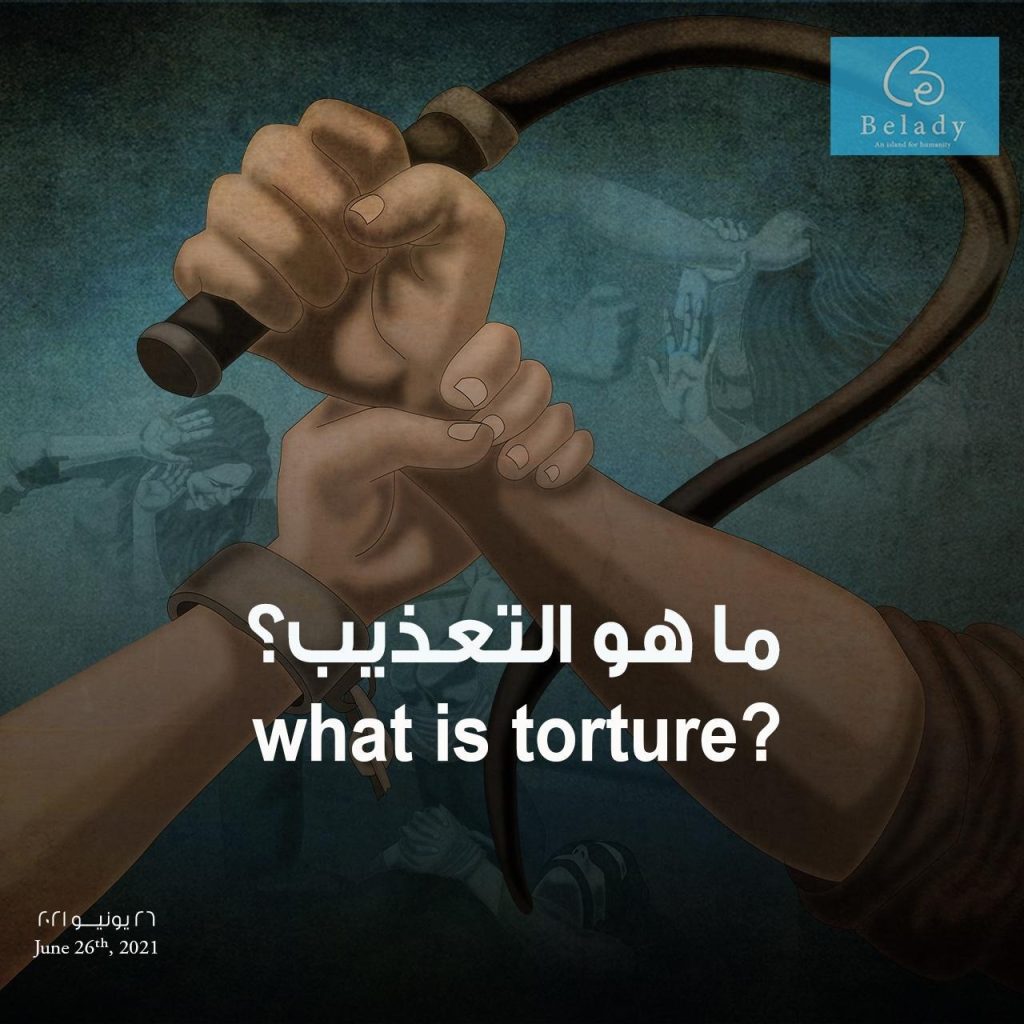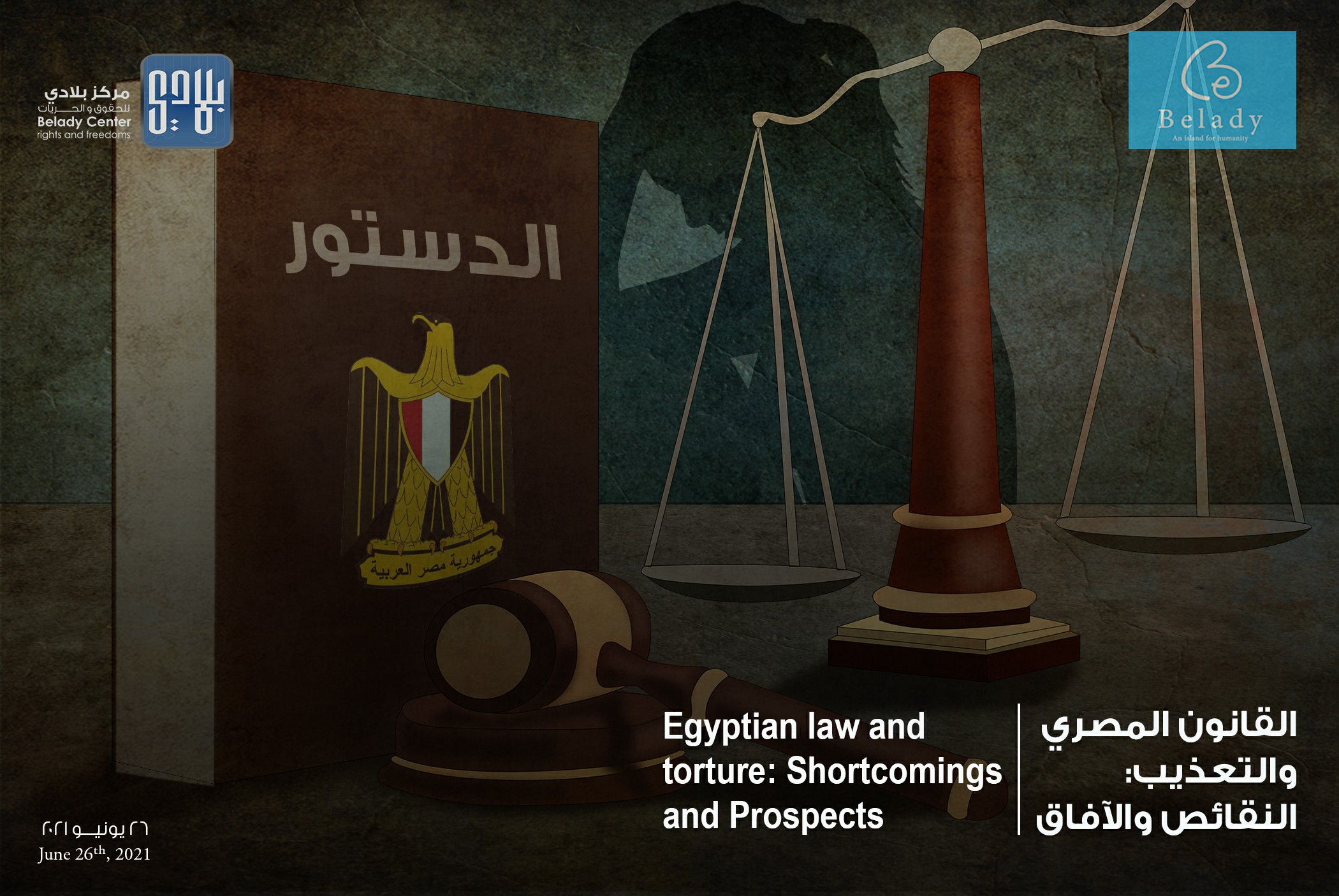
What is torture?
The United Nations defines torture as “any act by which severe pain or suffering, whether physical or mental, is intentionally inflicted on a person for such purposes as obtaining from him or a third person information or a confession, punishing him for an act he or a third person has committed or is suspected of having committed, or intimidating or coercing him or a third person, or for any reason based on discrimination of any kind, when such pain or suffering is inflicted by or at the instigation of or with the consent or acquiescence of a public official or other person acting in an official capacity. It does not include pain or suffering arising only from, inherent in or incidental to lawful sanctions.”

Torture by severe beatings and electric shocks
Belady observed that 155/252 (61.5%) female detainees have been subjected to physical torture and electric shocks at the hands of officers or other prisoners, as follows:
The Egyptian regime tortured 135/155 (87%) detainees with severe beatings; repeated slapping of the face; dragging; kicking in different body areas until severe injuries occurred. Injuries included bruises, wounds, broken bones, fainting, broken teeth, and severe eye and jaw injuries. Victims were forced to remain blindfolded, muzzled, handcuffed, or stand immobile for hours on end. Belady observed that pregnant women were among those who suffered beatings in the abdomen and lower back. The injuries led to colic, bleeding, and water leaking around the fetus. Authorities also used repeated electric shocks on 20/155 (13%) detainees.
Torture using various tools
Belady observed that Egyptian authorities tortured 206/252 (81.7%) detainees using various tools such as rifle stocks, sticks, lashes, chairs, “falaka” sticks, and more. Officers have choked prisoners using jackets, scarves, and their hands on several occasions. They also torture detainees in front of each other by repeatedly putting out cigarettes on their bodies, while jailers sprayed fourteen other detainees with cold water. This is done in order to force confessions.
Torture by dragging by the hair
Tugging and dragging by the hair was prevalent in almost all cases of torture. Belady monitored authorities cutting the hair of nineteen detainees. One woman was forced to shave her head completely in order to protect herself from being dragged by her hair or having her hair cut.
Torture with sexual assault
Belady observed sexual assault incidents among 124/252 (49.2%) political detainees, as following:
- 49/124 (39%) have suffered verbal harassment (obscene and profane words, etc.) in conjunction with physical harassment (touching of private areas).
- 20/124 (16%) were exposed to nudity, either by being stripped naked themselves or by other male detainees being stripped naked in front of them.
- 54/124 (43%) were forced to endure medical examinations such as anal and virginity tests, genital inspection, and compulsory pregnancy tests. One officer even raped a detainee in a deportation vehicle.
Psychological torture
Belady observed torture incidents among 154/252 (61%) detainees through severe and repeated psychological pressure, as follows:
-
48/154 (31%) female detainees were subjected to constant intimidation and threat by officers, wardens, and ward officials of beatings, deprivation of health care, electric shocks, rape, or the arrest and torture of a family member.
-
76/154 (49%) female detainees were subjected to verbal abuse that devalues their human dignity and insults using horrific terms.
-
28/154 (18%) female detainees were forced to see or hear the torture of a person(s), in some cases one of their family members.
Belady also monitored the forcing of one female detainee to stay in a room under strong light for a full 24 hours, and the forcing of another female detainee to go to the execution room before her verdict in order to intimidate her.
The crime of tortue is stipulated in Article 55 of the 2014 Egyptian constitution, according to which: “All those who are apprehended, detained or have their freedom restricted shall be treated in a way that preserves their dignity. They may not be tortured, terrorized, or coerced. They may not be physically or mentally harmed, or arrested and confined except in designated locations that are appropriate according to humanitarian and health standards. The state shall provide means of access for those with disabilities. Any violation of the above is a crime and the perpetrator shall be punished under the law. The accused possesses the right to remain silent. Any statement that is proven to have been given by the detainee under pressure of any of that which is stated above, or the threat of such, shall be considered null and void”.
Article 126 of the Egyptian Penal Code stipulates that “Any public official/civil servant or public employee who orders the torturing of a suspect or does the torturing personally, in order to force him/ her to confess, shall be punished with hard labor, or imprisonment for a period of three to ten years. If the tortured victim dies, the penalty as prescribed for deliberate murder shall be inflicted.”
We notice three basic shortcomings:
The legislator did not define torture, whether physical or mental, or stipulate, for example, some physical acts that, if happened, are considered a part of the stipulated crime’s physical element. He did not specify the intended public official. He has also stipulated that the crime occurs for a specific purpose, which is to force the defendant to confess. Specifically, the crime is there. It is described according to the Penal Code as “torture of a defendant to make him confess” instead of an independent crime as cited in the Constitution.
It was also mentioned in the second paragraph of Article 282 of the same law, which stipulates that: “…… In all cases, a penalty of temporary hard labor shall be imposed against whoever arrests a person without any legitimate claim , and threatens to kill him , or torments him with physical tortures”. Here we find that the punishment applies only to the physical torture with no regard to psychological torture. The physical torture is required to be accompanied with unjust arrest instead of considering it as an independent crime.
Fortunately, the legislator states that those two crimes can exceed the limitation period. In other words, the right to criminal liability is not subject to any statute of limitations, according to the second Paragraph of Article 15 of the Code of Criminal Procedure.
Lastly, the law implicitly criminalizes any act of violence. Article 129 of the Penal Code stipulates that: “Any public official or employee civil servant or any person charged with performing a public service who employs cruelty with people, depending on his position, such that he/she commits a breach of their honor, or incurs bodily pains to them, shall be punished with detention for a period not exceeding one year or paying a fine not exceeding two hundred pounds.”
We find that this article criminalizes the act of “cruelty” used by a public official because of his occupation. For the crime to occur, the use of cruelty must result in dishonoring the victim or physically hurting him/her. No physical act is specified to represent this crime. The occurrence or absence of the crime depends on psychological matters such as dishonor or pain. The legislator also does not include it in Article 15 of procedures. This crime can be abated with the elapse of time.
Belady calls upon the Egyptian authorities: to implement the laws that protect citizens from torture; to review the legislative framework in order to improve it; to acknowledge and recognize the use of enforced disappearance and all forms of torture and to seriously and urgently seek to eliminate these crimes; to rehabiliate the survivors and to compensate for them and their families; and to hold accountable those involved in torturing citizens.










